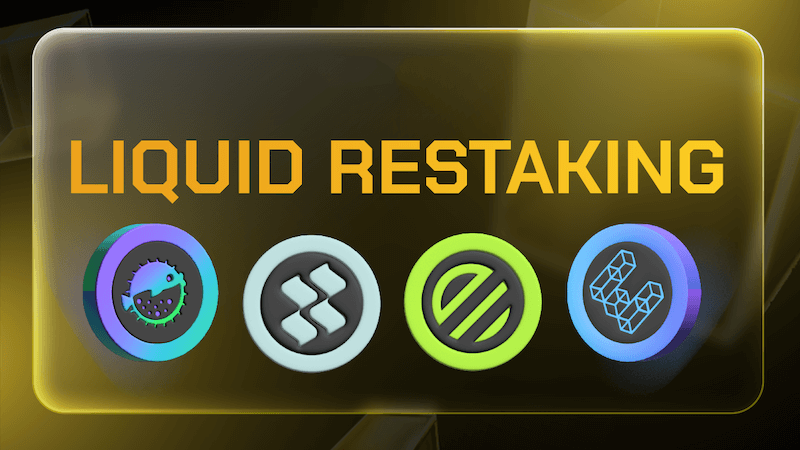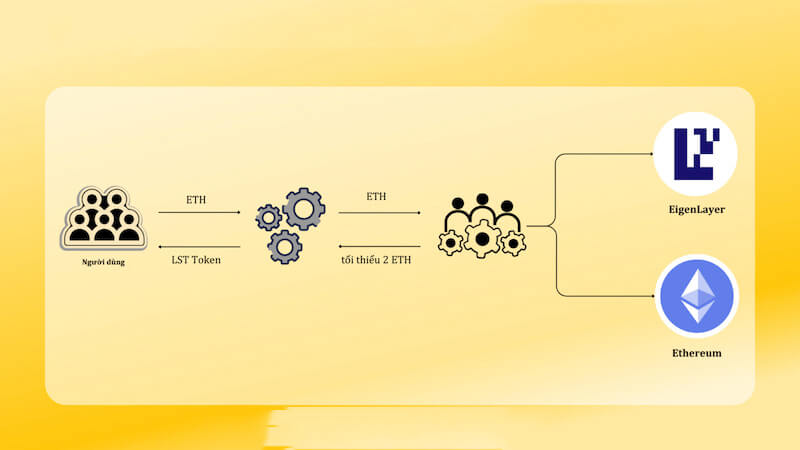Liquid Native Restaking has emerged as one of the most “hot” topics within the EigenLayer ecosystem and the DeFi market. The growing interest from both the community and top investment funds shows the significant potential of this field. So, what makes Liquid Native Restaking so special? Let’s dive deeper into the details.
What is restaking and native restaking?
Restaking is a concept introduced by EigenLayer, allowing users to stake their Liquid Staking Tokens (LST) on its platform after initially staking them elsewhere. Native Restaking, on the other hand, refers to the operations of Validators within the EigenLayer network. With this model, Validators on the Ethereum network can not only earn rewards from Ethereum but also gain additional income by participating in EigenLayer.
However, Native Restaking comes with certain limitations. Becoming a Validator on Ethereum requires substantial hardware and financial resources, with a minimum staking requirement of 32 ETH (approximately $70,000 at the time of writing). Security risks and the threat of Slashing (penalties for breaking network rules) are also significant challenges.
What is Liquid Native Restaking?
Liquid Native Restaking was developed to address the shortcomings of Native Restaking on EigenLayer. One of its key advantages is that it allows Node Operators to deploy and operate a node on Ethereum with only 2 ETH, significantly lower than the direct requirement on the Beacon Chain.
Additionally, technologies like DVT (Distributed Validator Technology) help reduce hardware requirements while enhancing security. These solutions not only scale the system but also improve decentralization on the Ethereum network.
How Liquid Native Restaking works
Liquid Native Restaking operates through three main steps:
- Step 1: Users deposit ETH into Liquid Native Restaking protocols and receive LST tokens in return. These tokens represent earnings from staking ETH on Ethereum and the rewards from Node Operators running on EigenLayer.
- Step 2: Aspiring Node Operators need to deposit a minimum of 2 ETH, with the remaining ETH sourced from the pool of funds provided by users.
- Step 3: Node Operators run nodes on both EigenLayer and Ethereum to maximize returns. The integrated technologies of Liquid Native Restaking aim to boost security and decentralization.
Despite its benefits, Liquid Native Restaking also comes with inherent risks. Some Node Operators may over-leverage by activating multiple nodes, which can lead to penalties if they lack experience. This could result in the loss of both their own ETH and the ETH staked by users. Furthermore, the technologies behind Liquid Native Restaking are still in development, meaning there are ongoing risks related to security and operations.
Notable projects in Liquid Native Restaking
Puffer Finance is one of the first Liquid Native Restaking projects in the Ethereum and LSD ecosystem, backed by Ethereum Foundation. The project has developed several cutting-edge technologies, such as Secure-Signer, designed to mitigate losses from Slashing, and Fractal DVT, which enhances security and decentralization without requiring complex hardware.
Puffer Finance has successfully raised funds from prominent investment firms like Jump Crypto, Animoca Brands, and Lemniscap. Moreover, the Secure-Signer and RAVe technologies have received grants from Ethereum Foundation, further solidifying the project’s reputation.
Ether.fi is another standout project in the Liquid Native Restaking space, allowing users to maximize returns from staking ETH. Although Ether.fi lacks the extensive range of technologies seen in Puffer Finance, it uses DVT technology from Obol Network to ensure that node operators don’t need extensive hardware while maintaining high security.
Ether.fi has garnered investment from major funds, including North Island Ventures, Arrington Capital, and Versionone, highlighting the project’s potential.
Liquid Native Restaking represents a groundbreaking innovation in the staking and DeFi sectors, offering multiple benefits for both users and node operators. With promising new technologies and growing interest from the broader community, this field is set to witness significant breakthroughs in the near future. Thank you for your interest in following the Blockchain Bulletin Weekly article.


